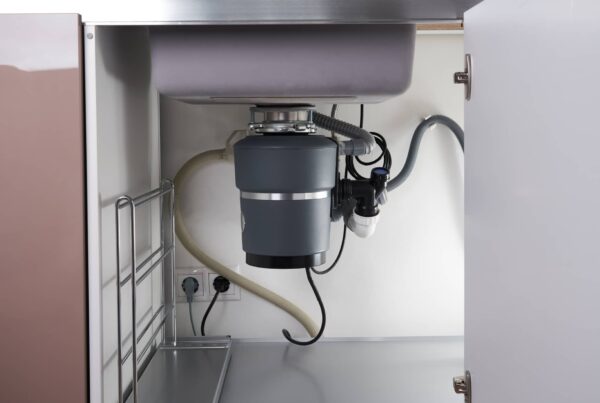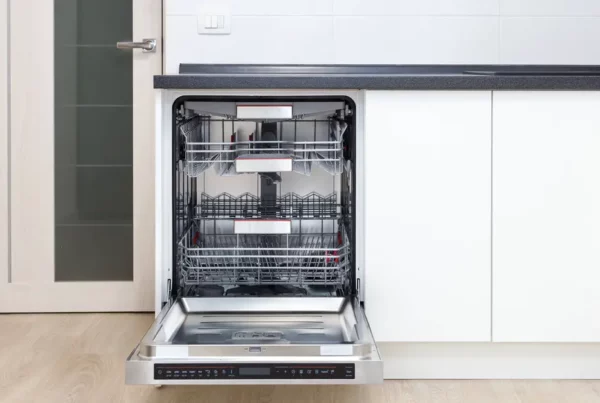
When we turn on the bathroom or kitchen sink faucets in the house, we expect a gush of water so we can clean our hands or wash our dishes easily. Sometimes, though, we may have issues with water pressure. How to increase water pressure in the sink? First, check with the water company to make sure it is not everyone having the issue. Then you can start looking into the other possibilities.
Let’s take a look below at all of the areas to investigate.

Check the Aerator
The first thing you want to do if you are having issues with the water pressure in the kitchen or bathroom is to check the aerator. You will find that most kitchen faucets have one of these. What is it? It is a fitting that is like a screen and it is screwed onto the spout of the faucet. The purpose of it is to break the water flow into a lot of tiny streams through small holes and to oxygenate the water. Next, the second purpose is to not allow the water to flow all over the place. You may have a clogged aerator because of mineral deposits.
To Fix the Aerator
- Use pliers to unscrew and remove the aerator
- Turn on the faucet now that the aerator is off. If It is a normal flow, you know what the issue is.
- Soak the aerator in a bowl of vinegar overnight to dissolve scale.
- Replace or leave it off.
- If it is not the aerator, continue reading to the next section.
When the Aerator Is Not the Issue
New Faucet – Have a new faucet that is giving you issues? This can be because there is plumbing tape or other debris stuck inside the faucet.
Older faucet – it may need service and may have debris inside. However, the debris probably is because of the pipes or the water.

Blockage in Faucet
- Turn off the water
- Unscrew the handles of the faucet
- The valve retaining nuts need unscrewing and then you can removed the valves
- Grab a bowl and put the valves in with vinegar to dissolve the water deposits.
While the Valves are Out
Remove gaskets – there are internal rubber gaskets you need to remove first.
Flush the housing of the valve- You can do this by turning on the hot and cold water. This allows the water to come out from the valve housing. This should give you a normal flow of water.
Blockage in Pipes
If the low faucet water pressure is not the aerator or something stuck in the faucet, it can be a blockage in pipes. To fix this:
- Shut off valves and disconnect the hoses.
- Put a bucket under each water valve, fully open the valves, turn on the water and watch the flow.
- If there is enough pressure, then the issue is in the faucet.
- Low pressure – backflushing the pipes may clear the blockage.
- Old pipes – blockage is probably because of rust from the pipes.

Flushing Water Heater Can Increase Water Pressure in Sink
If the low water pressure problem is only in the hot water pipes, then the culprit may be rust coming from the water heater. Flush the water heater after you have back-flushed the pipes. Additionally, if you have galvanized pipes in your home, call a plumber to inspect them as they may need replacing.
Check The Regulator
Something else to consider is the regulator that is located outside the home. It is either at the service line that enters the home or the meter by the street. The purpose of a regulator is to keep water from rushing through the home and causing a water hammer. If your regulator goes bad, it will cause a reduction in water velocity, which will reduce water pressure on your faucets.
Install A Pressure Booster
Remember, distance and gravity can determine how long it takes for water to get to your home. It can also determine the type of water pressure. So, there are situations where the home might need a pressure booster to assist your flow. A water pressure booster pump is the way to go if your home is a long distance from the municipality’s water source.
How Much Does It Cost
Believe it or not, the average cost to increase the water pressure in your sink is fairly high. You are looking to spend around $800 on a pressure booster. This is just for the unit. The size and features that you select as well as the labor charge will dictate how high the price tag goes. It is not unusual to spend over $1,000 on a project like this. First, troubleshoot your faucet aerator and then decide as to an upgrade.
Other Recommended Maintenance
You might be wondering if you have roots growing into the pipes. To know if there are roots, a sewer scope inspection can be done. This will be able to pinpoint the area where the roots might be growing so the entire sewer system doesn’t have to be torn apart.
Sometimes there may also be sediment in the water lines. How do you clean it out? It is a step-by-step process that involves removing the aerator screens and turning off the water heater. This will clean and flush the sediment from the water lines.
Lastly, if you are having a hard time making hot water last in the house, there are a few areas to check. One of those is to increase the thermostat, maintain the water heater, and refrain from simultaneous usage.

When Should I Call A Professional
Anytime you are dealing with a plumbing issue such as low pressure in your faucet you should consider hiring a professionally licensed plumber. Call your local home inspection team to conduct a full home inspection.
While they conduct the inspection, they will be able to tell you what your plumbing needs might be and offer up some reputable professionally licensed plumbing contractors. Then you can reach out to a few of them for various quotes on your potential plumbing needs. This is often the easiest approach as you might not have the time or tools to fix your water pressure concerns.
Conclusion
Losing water pressure is no fun for anyone. No matter the home, you want to have a nice flow of water in your home. Depending upon how far the water has to travel can oftentimes determine the pressure. One area that can affect our water pressure can be the pipes underground. Oftentimes we forget that vegetation such as plants and tree roots can break into our water pipes. If this occurs, you are sure to see a reduction in water pressure.
Once you checked your aerator on the faucet head and cleaned that out as well as flushed your water heater from sediment, you will want to check the yard for any pooling of water. Call Waypoint Property Inspection to inspect your home in Tampa, St. Petersburg, Lakeland, Orlando, Palm Beach, Ft. Lauderdale, and surrounding areas.



